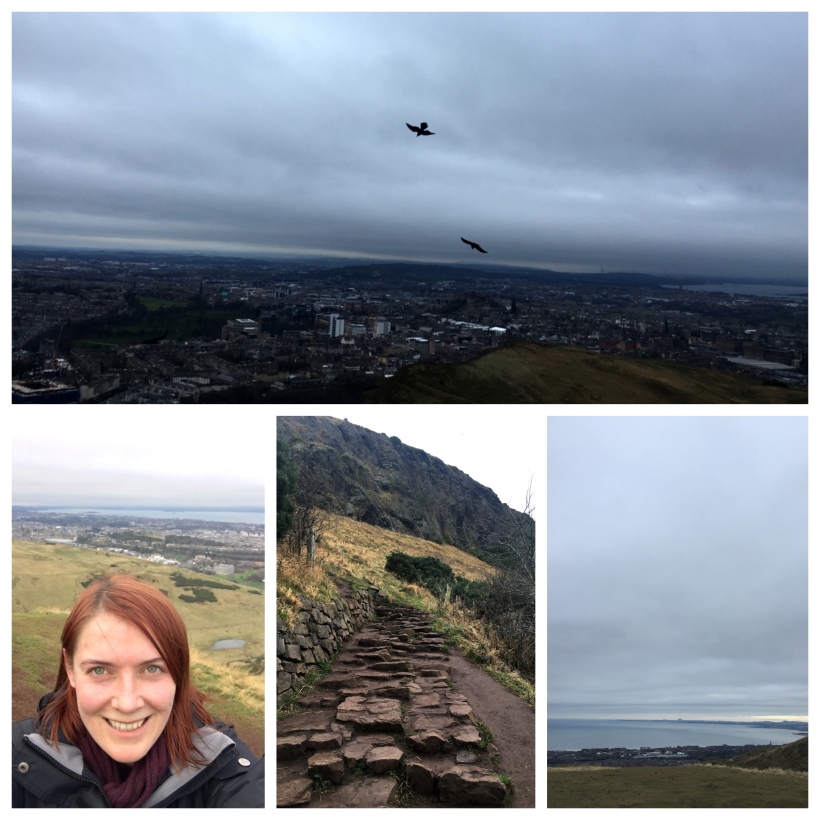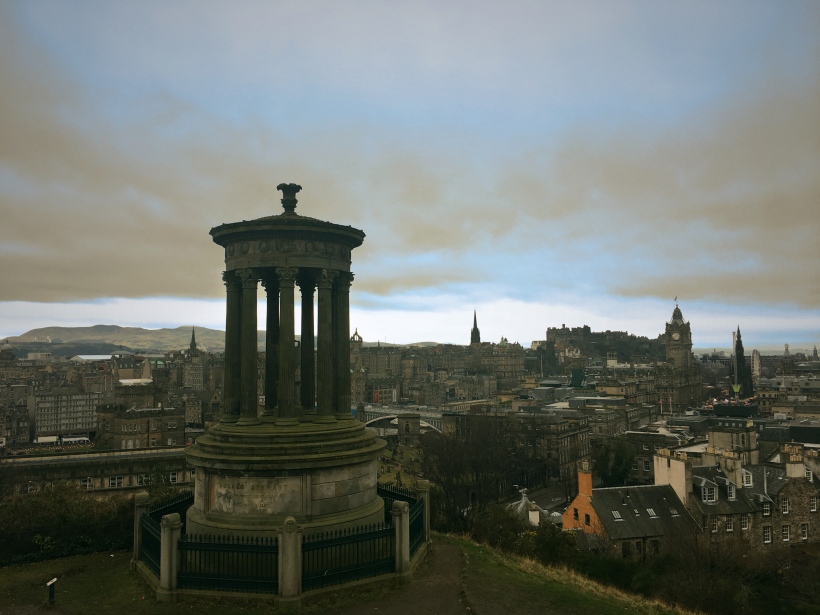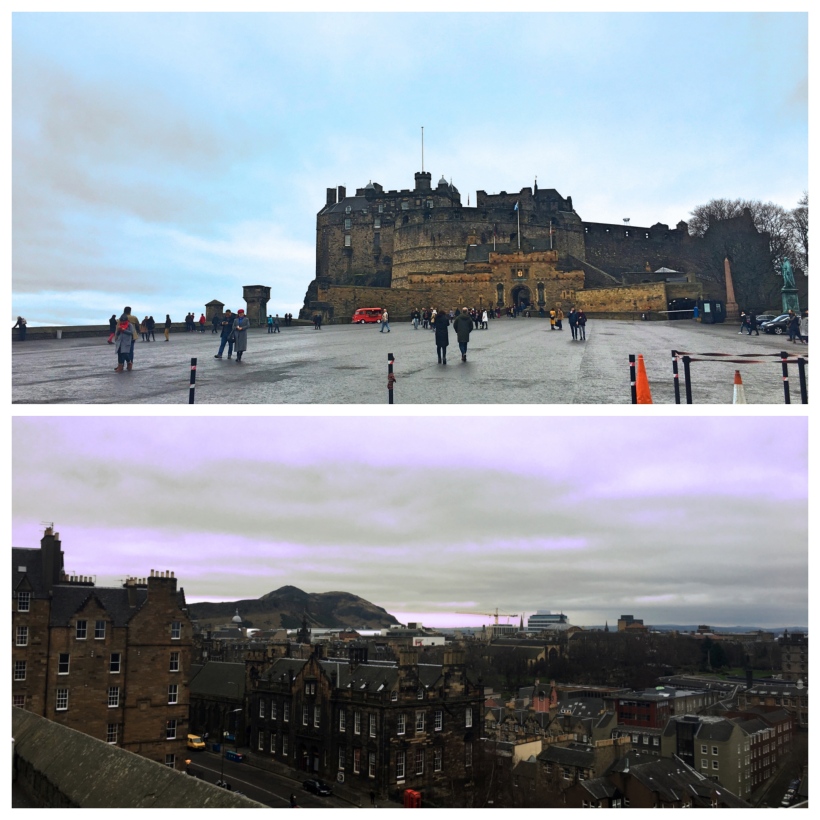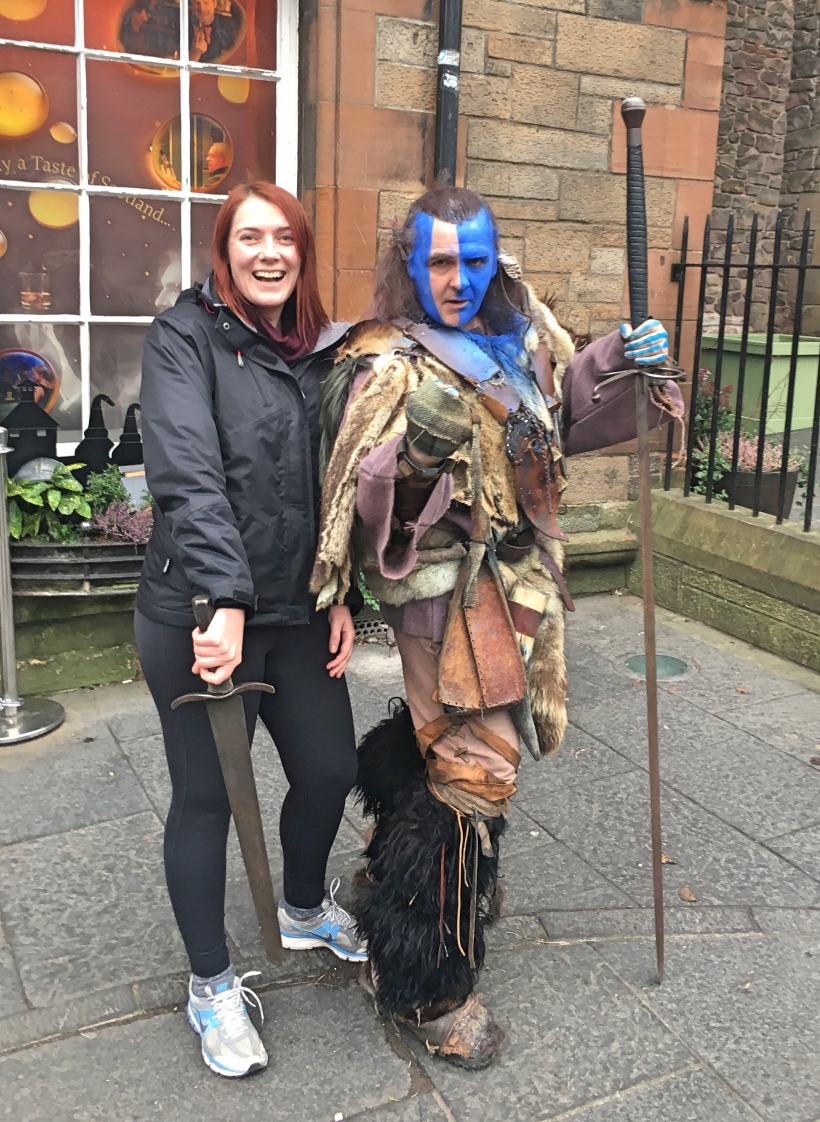Today Paul and I went for a walk around the hills of Edinburgh city centre and took in some of the history on our way.
Holyrood Park & Arthur’s Seat
We started out with a walk around Holyrood Park and up Arthur’s seat, the first of three hills on our route. Holyrood Park is a slice of countryside in the middle of Edinburgh City Centre. A former royal hunting ground, and the site of a number of bronze age forts, the area was designated as a park by King James V in the 16th century.
Heading out from the car park near Holyrood Palace we wandered along the Radical Road. The road was built by unemployed “radical” weavers at the suggestion of Sir Walter Scott, following the period of unrest in 1820 known as the Radical War. Although the way is not challenging, it is still rather steep and you can only imagine how difficult it would have been to build the path here. The road is about mid-way up the Salisbury Crags, a cliff face that juts our just below Arthur’s seat.

At the end of the Radical Road we ascended a set of steep stone steps carved into the side of the hill up to the top of Arthur’s seat. There are not many places where you can enjoy views of such a beautiful city from the remnants of an old volcano. Although the day was overcast we had clear views over the city, the Pentland Hills (a destination for future training walks) and out to the Firth of Forth.
As well as a large number of tourists taking in the panoramic views of Edinburgh, Arthur’s seat was also being enjoyed by a group of crows. Seeing them glide on the wind as we took in the scenery only made the views even more spectacular.
From here we head down towards Dunsapie Loch and followed the road back round to the other side of Holyrood Park where we started. On the way we passed by St. Margaret’s Loch and had a good view of the ruins of St. Anthony’s Chapel.
Carlton Hill

After Holyrood we headed over to Carlton Hill (hill number two), which was formed from the lava and ash produced by the vents of the Arthur’s seat volcano complex. This is a much gentler climb, giving impressive views of Edinburgh and for considerably less effort. The hill is home to the City Observatory as well as a number of monuments (the Burn’s Monument, the Nelson Monument and the National Monument). Being part of Edinburgh’s UNESCO World Heritage Site it is well worth a visit.
Castle Rock

Down from Carlton Hill and a stroll down the Royal Mile through Old Town ends brings us to Castle Rock (hill number three) and the location of Edinburgh Castle. Castle Rock is a volcanic plug, forming an ideal defensive position and as a result there has been a castle here since the 12th Century. From the castle esplanade you can also look back and get a good view of our starting point at Arthur’s Seat.
No visit to Edinburgh Castle would be complete without a photograph with William Wallace! His statue can be found in bronze as one of a pair flanking the entry to Edinburgh Castle Gatehouse (the other is Robert the Bruce). However, the William Wallace I am referring to is the impersonator who stands outside the Scotch Whiskey Experience. This particular William Wallace is quite a character, well worth stopping to say hello to, and all of the money that he collects is donated to Leukaemia research.


Pingback: January update | Rory's Feline Good